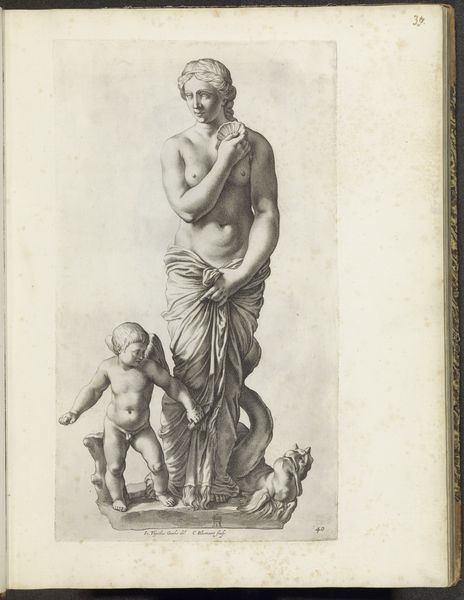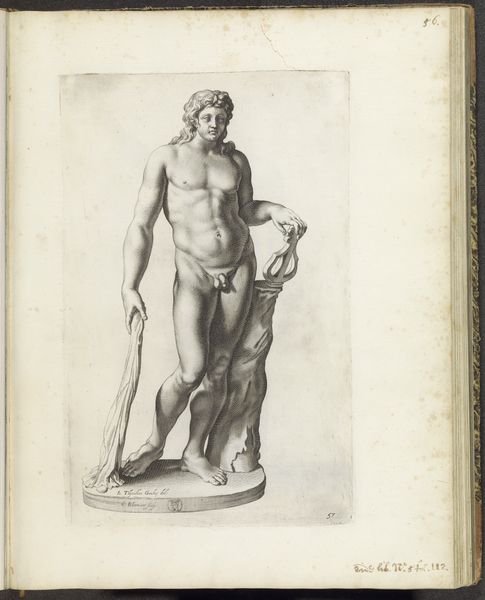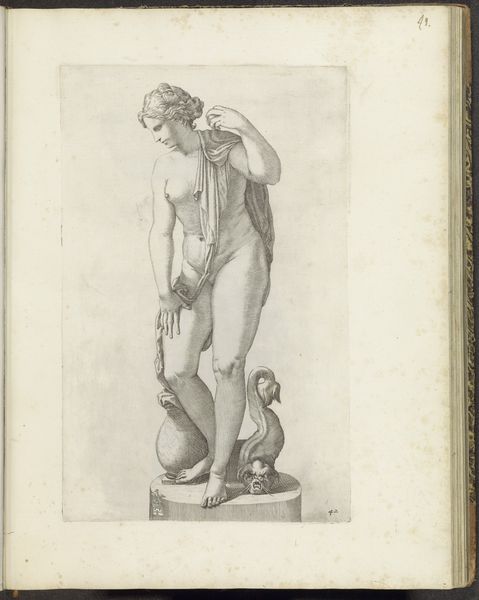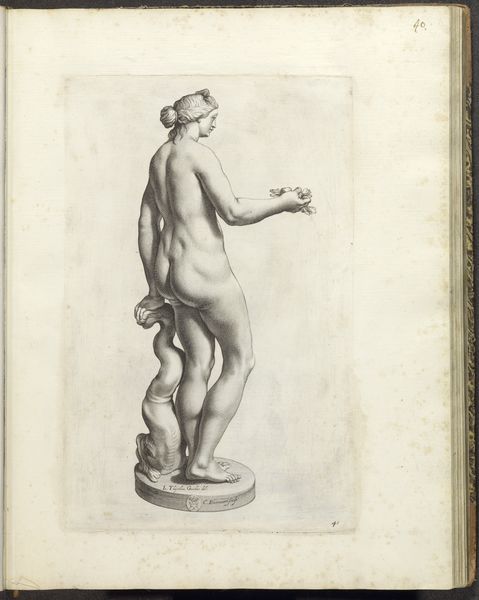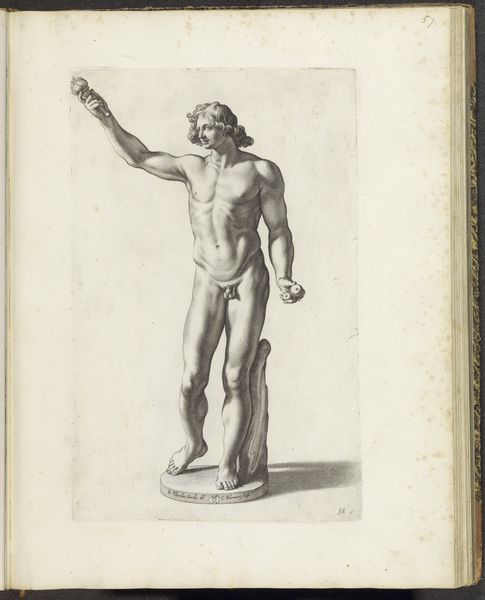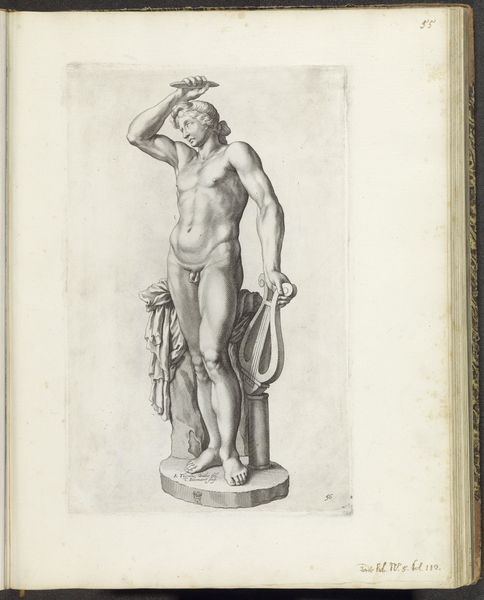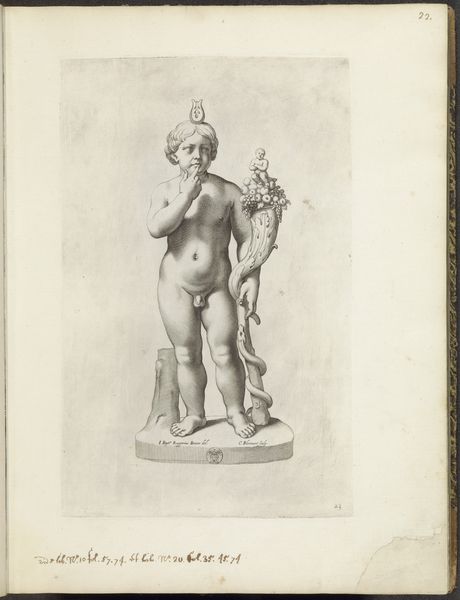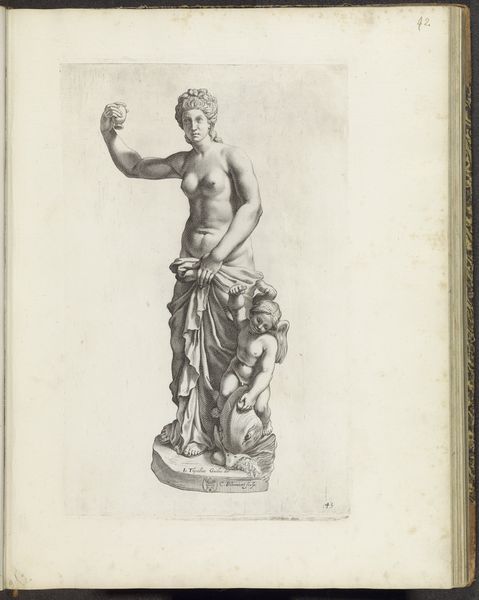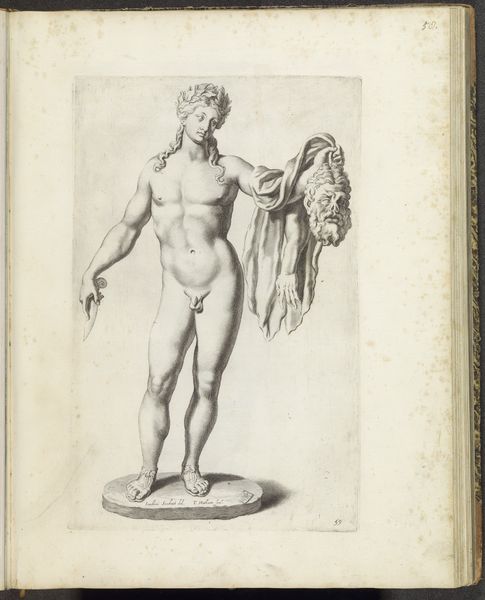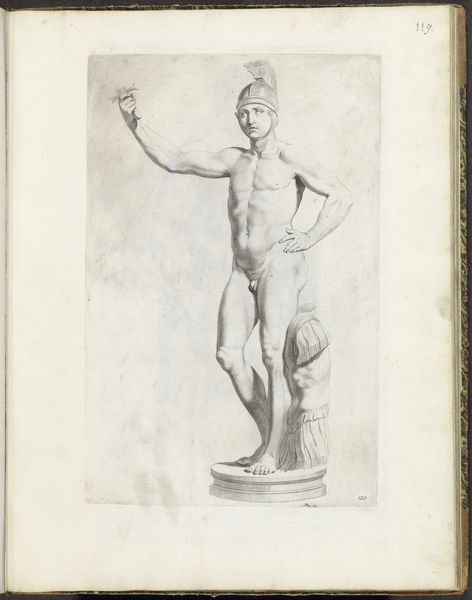
drawing, pencil, graphite
#
drawing
#
baroque
#
classical-realism
#
figuration
#
pencil
#
graphite
#
nude
Dimensions: height 370 mm, width 230 mm
Copyright: Rijks Museum: Open Domain
Cornelis Bloemaert made this drawing of a sculpture of Bacchus with a putto sometime in the 17th century in the Netherlands. It reflects the culture of classicism that prevailed in European art at the time. This aesthetic movement looked back to the ideals of ancient Greece and Rome, not only for artistic inspiration but also for moral and political guidance. Bacchus, the Roman god of wine, fertility, and theatre, was often associated with revelry and the subversion of social norms. The putto, a cherubic figure often seen in Renaissance and Baroque art, can be seen as an allegorical attribute to Bacchus, emphasizing the importance of pleasure. The Rijksmuseum, like many national museums, plays a role in shaping our understanding of Dutch cultural identity. By collecting and displaying works like this, they contribute to a narrative of artistic achievement and cultural heritage. The meaning of art is not fixed but is always shaped by the social and institutional contexts in which it is created and viewed. Art historians can explore this drawing further by researching Bloemaert's biography, the patronage system of the time, and the history of the Bacchus figure in art.
Comments
No comments
Be the first to comment and join the conversation on the ultimate creative platform.
